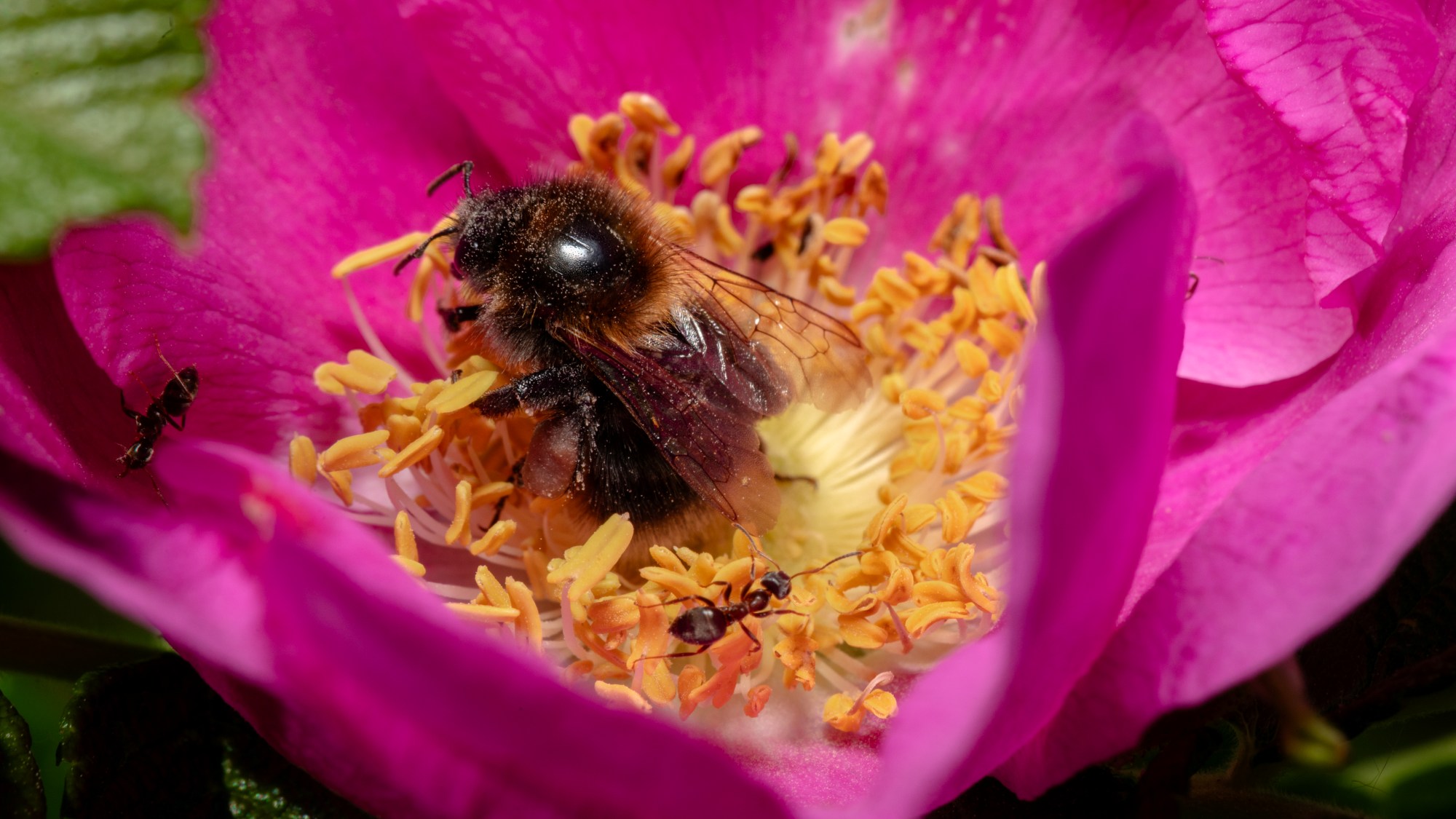
© Matej Meza / Universität Bremen
Blossoms, Buzzing, and Birdsong: Biodiversity on Campus
A campus tour with Marko Rohlfs, professor of ecology
Springtime has reached its peak and the campus is in full bloom. What all is growing on campus and how biologically diverse is the campus wildlife? For Biodiversity Day on May 22, up2date. accompanied Professor Marko Rohlfs on a tour along the University of Bremen’s Boulevard and spoke with him about the plants and animals that can currently be seen, the challenges of climate change, and how students and employees can help to promote species diversity.
Which plants bloom on campus in the spring and what animals can we see now?
The university campus is a bustling place in May. Though the last weeks were very warm and dry, and the grasses and plants seem rather withered in several spots, there is still very much to see. In the grass at the end of University Boulevard are many thistles. These provide a habitat for a number of small insects such as froghoppers. The small pink flowers of the heron’s bill attract butterflies such as the brown argus, whose caterpillars we see developing here. There are many evening primroses growing on campus, which were originally native to North America. Since their buds only open in the dark, these provide a popular source of nourishment for moths.
Not all species whose seeds have spread to the campus are native to this area. We see increasing numbers of plants and animals from southern regions that also thrive in the temperatures and current reduced precipitation of the North. There are bare patches on campus that may not appear to be very biodiverse. Despite their lack of aesthetic appeal, these areas often provide a habitat for rare species, such as many ground-nesting bees that prefer sandy soil. In addition to the insects, we can also see larger animal species on campus, such as voles, rabbits, and even hares. The campus serves as the breeding ground for many bird species as well, including peregrine falcons on the Drop Tower, common gulls on the roofs of the SuUB, as well as Eurasian oystercatchers, common wood pigeons, tits, and robins.

© Matej Meza / Universität Bremen
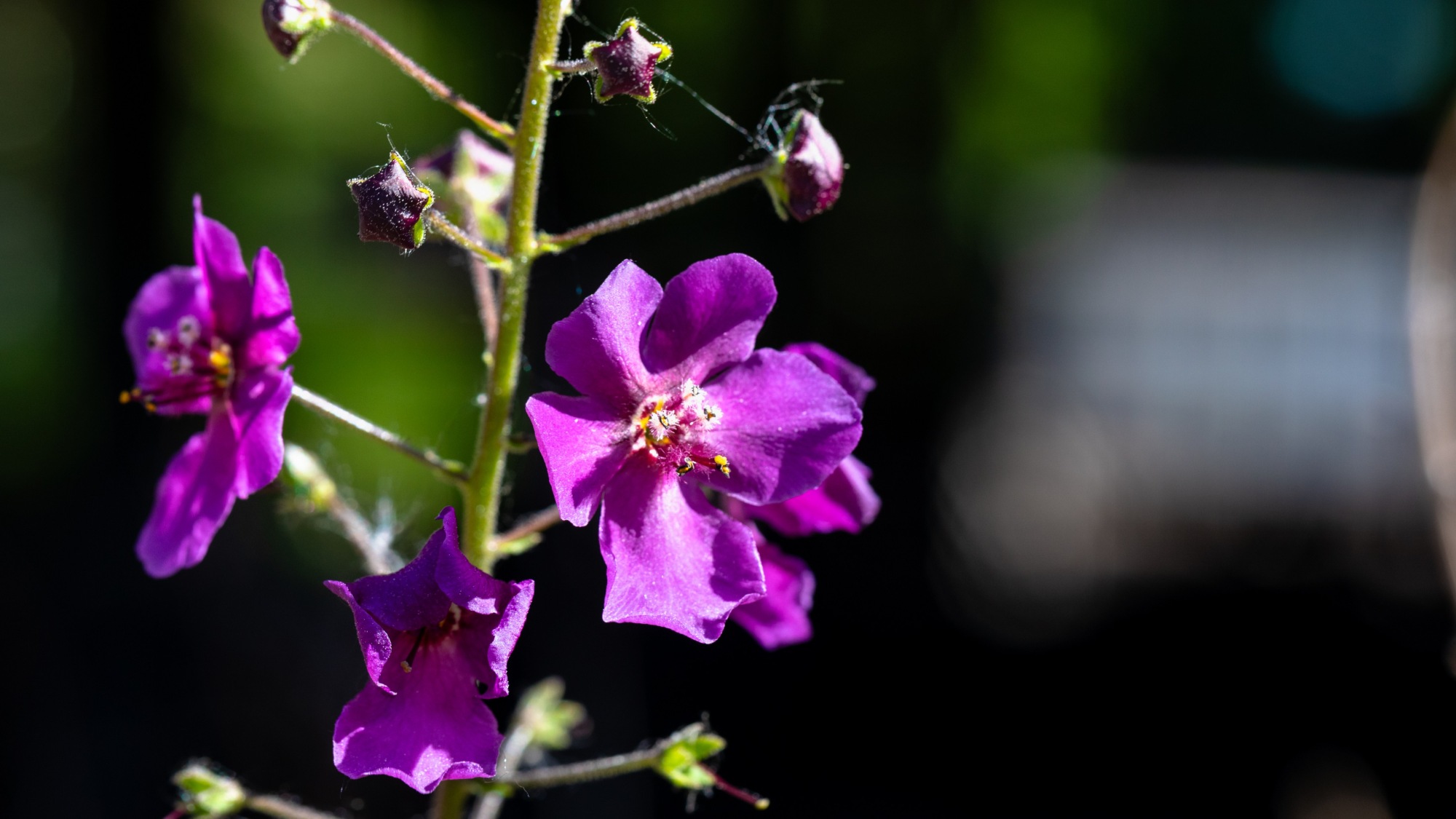
© Matej Meza / Universität Bremen
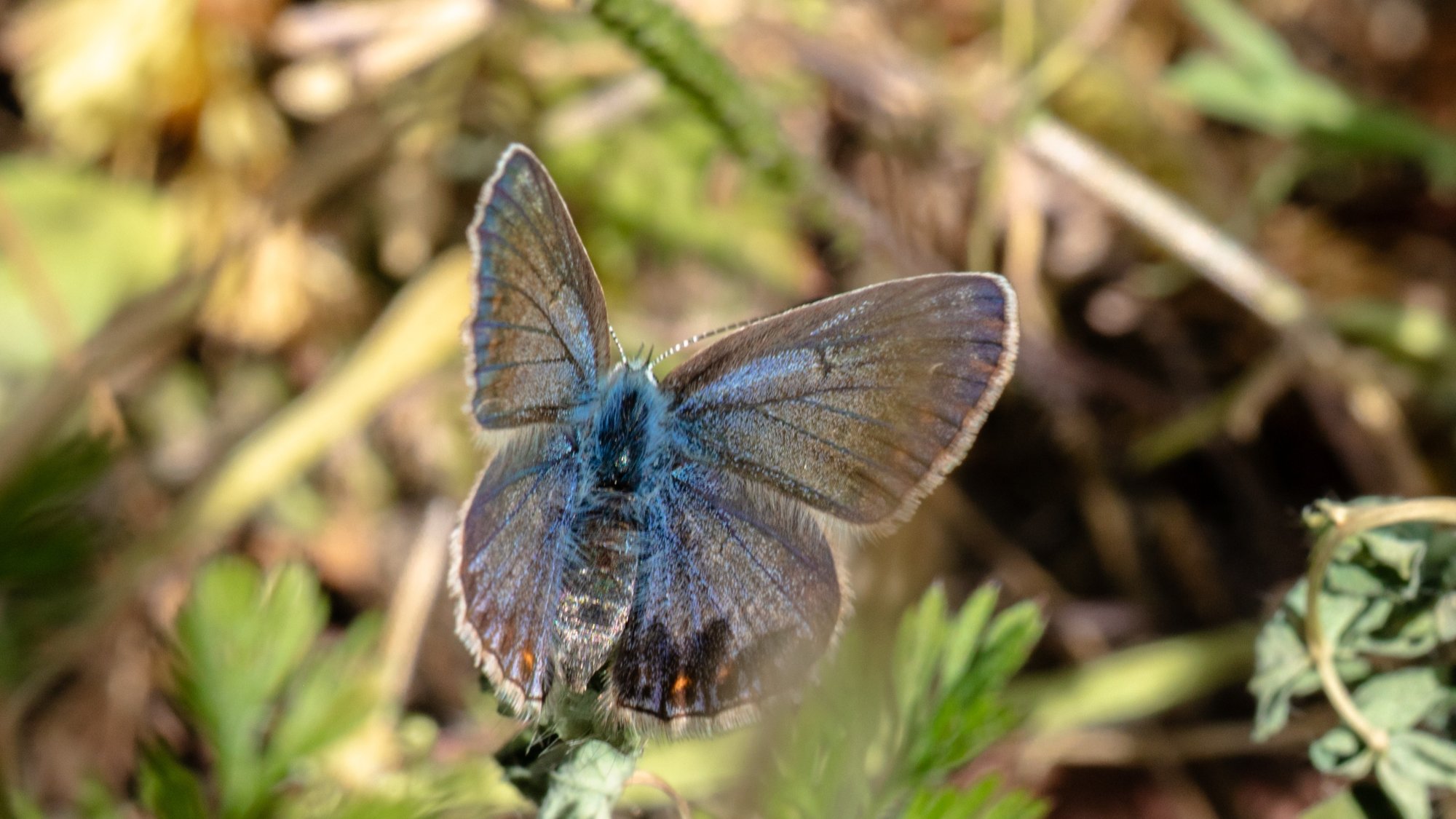
© Matej Meza / Universität Bremen
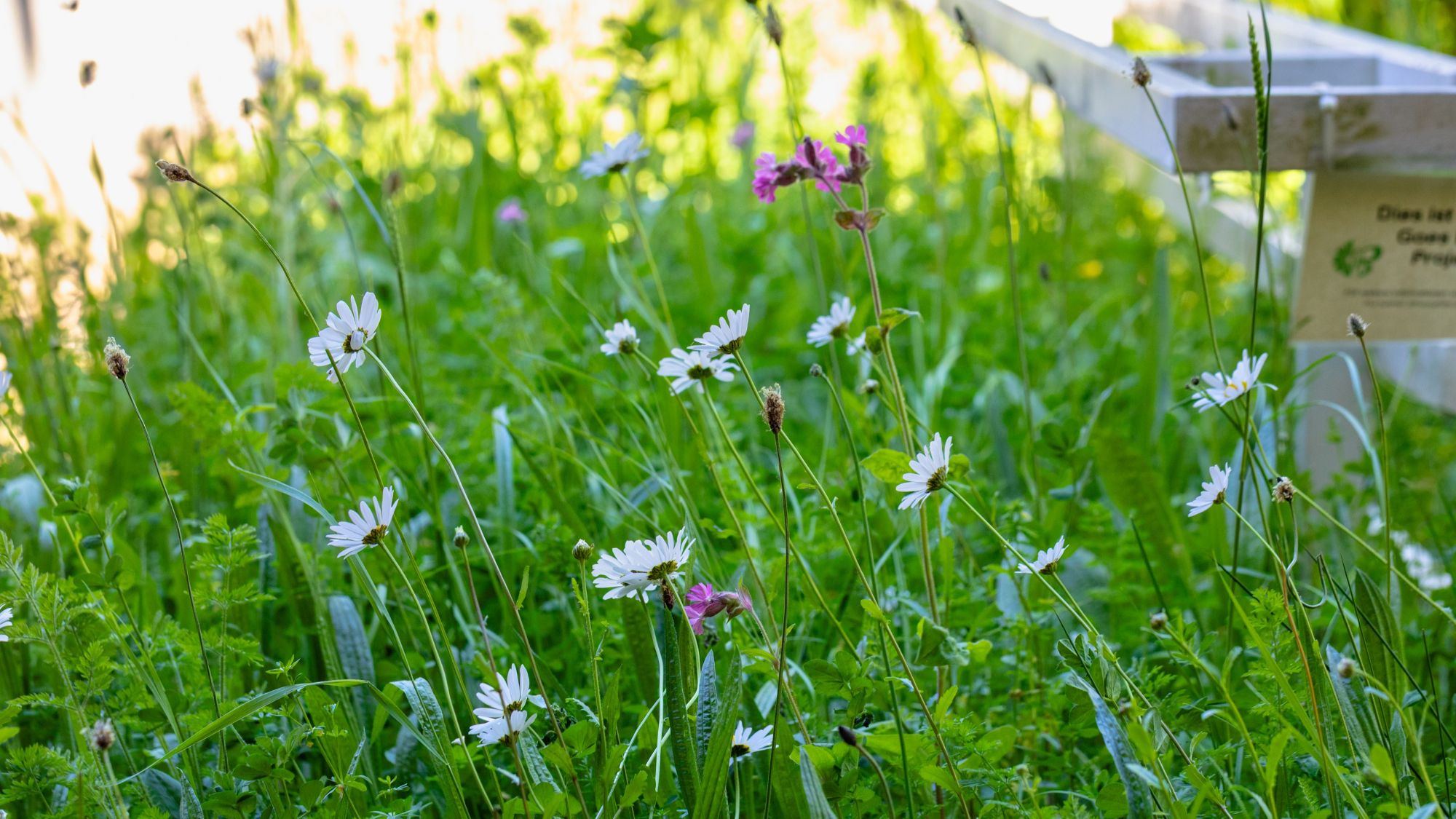
© Matej Meza / Universität Bremen
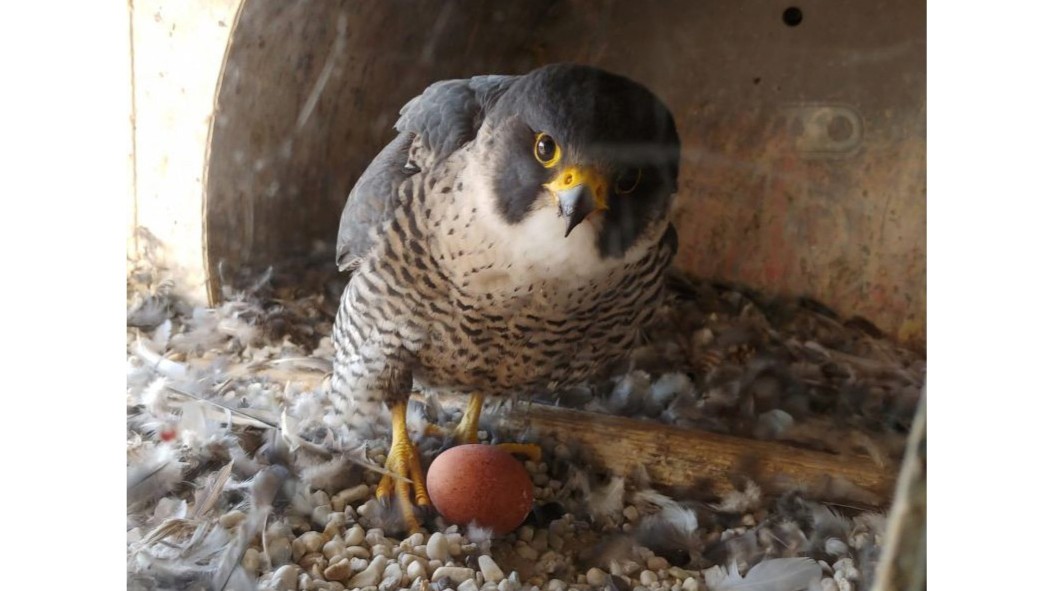
© ZARM / Universität Bremen

© Matej Meza / Universität Bremen
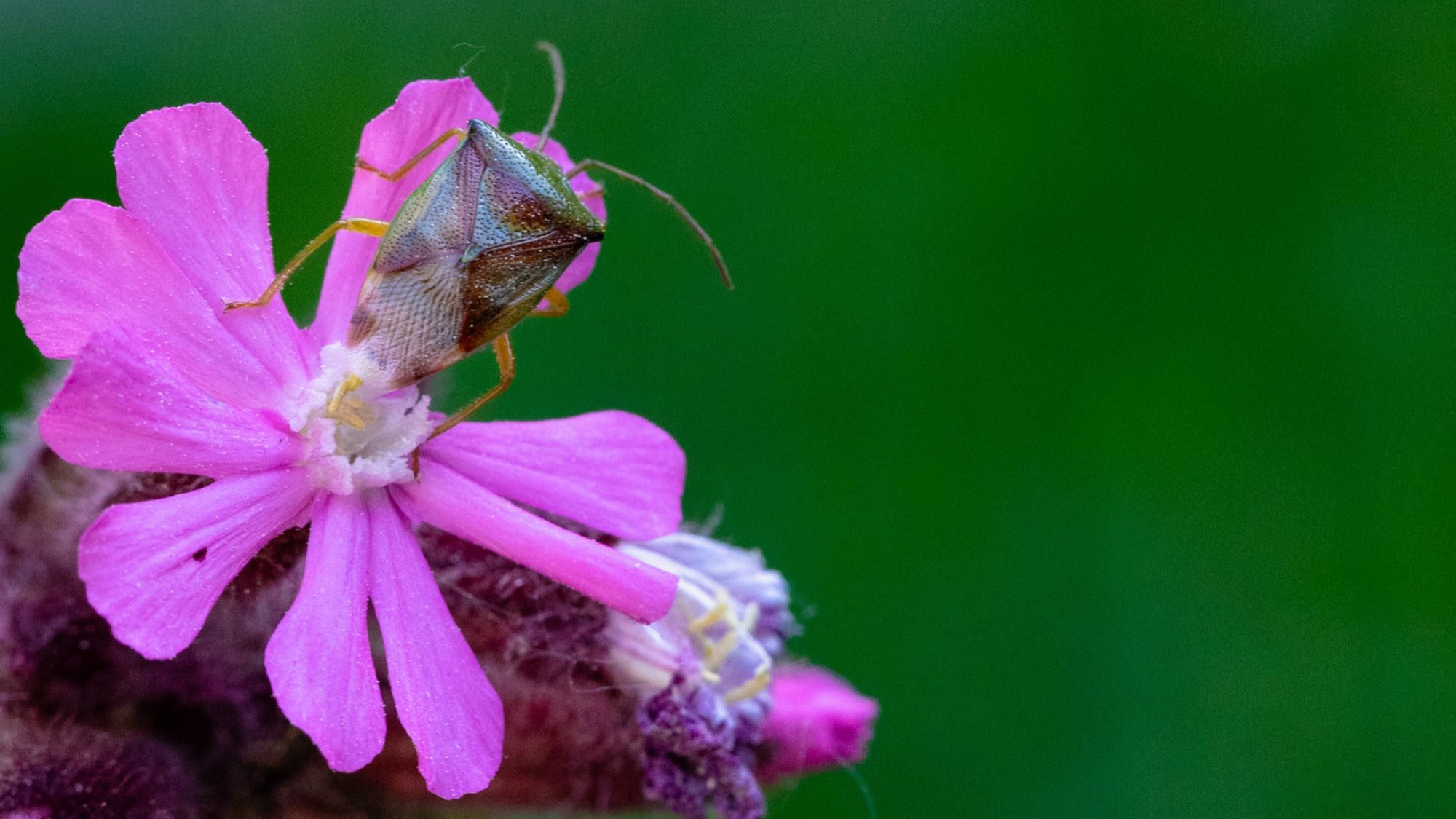
© Matej Meza / Universität Bremen
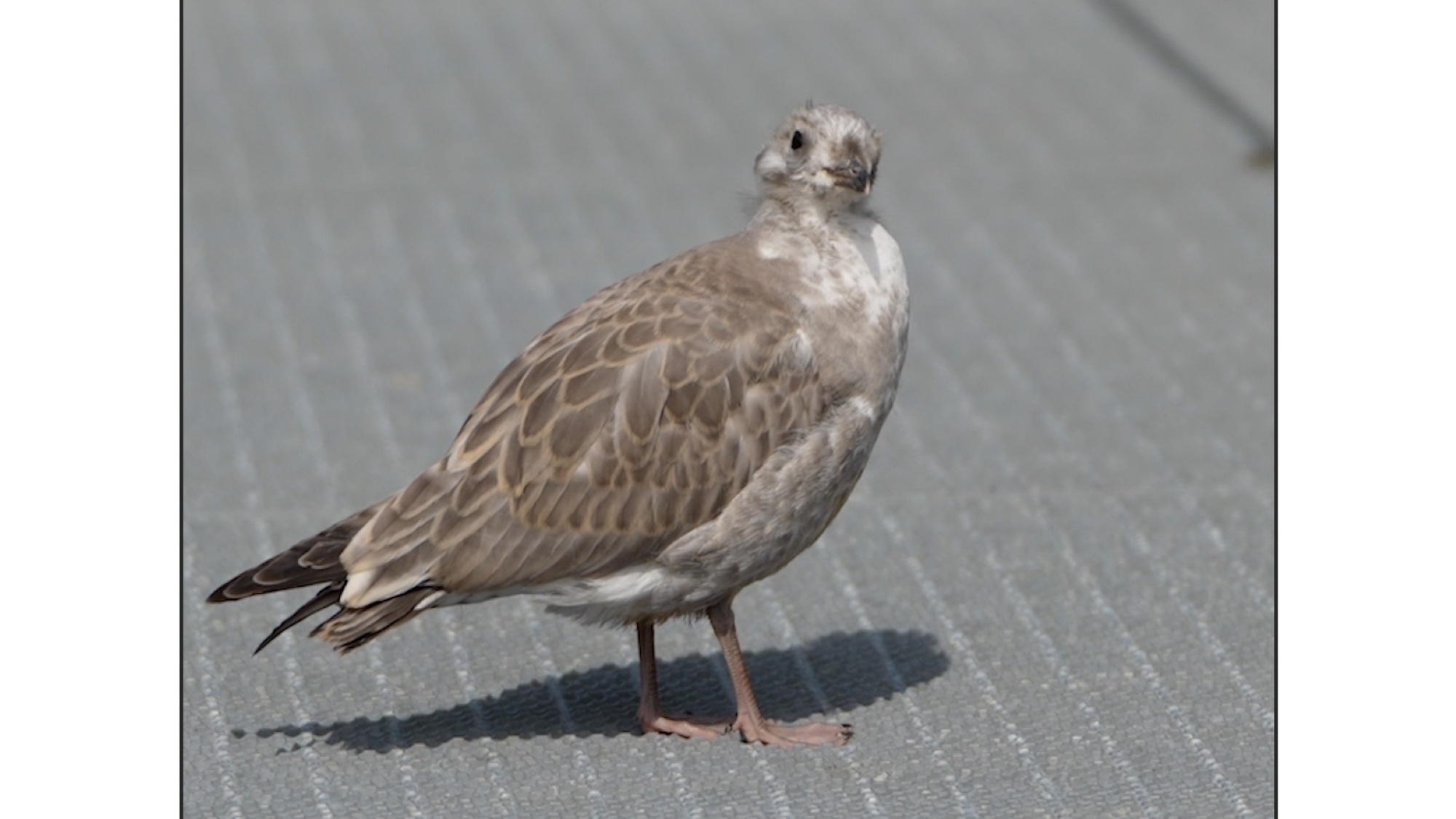
© Annemarie Popp / Universität Bremen
How can we determine the different species of plants on campus?
Using various apps, most plants and many animals can be identified without prior knowledge of the different species. Examples of these apps include iNaturalist and Flora Incognita. With the Merlin app, birdcalls can be identified as well.
What role do the different habitats on campus – bushes, meadows, bodies of water – play in biodiversity?
Habitat diversity is always good for biodiversity. When we take a closer look, we see that many species serve as habitats for others. It is important to understand the complex interdependencies between wildlife species. Many species need different habitats for nourishment and reproduction. If one of these habitats disappears, so do the species that live there. That is why it is important to maintain and encourage a range of habitats on campus.
What effects do changes in climate have on campus wildlife diversity and how can we adjust to this?
In very dry years, we notice a drastic change in both vegetation and insect diversity. I expect that climatic changes will leave lasting traces in the biodiversity on campus and beyond, and may have already done so. Some species disappear and others migrate here from other regions. Biodiversity reacts very dynamically to climate change. At latitudes like ours, the biggest problem is that many habitats have been widely destroyed, which has caused the extinction of many species and reinforced the problematic influence of rapid climate change on local biodiversity. I am afraid we will only be able to watch these changes. However, by implementing a diverse management of campus green spaces that consider ecological processes, we can attempt to mitigate the effects of climate change, albeit on a small scale.

© Matej Meza / Universität Bremen
How can human activity endanger biodiversity on campus?
Too much activity, such as frequent mowing, destroys biodiversity. Only a few species are able to thrive in the face of such extreme disruption. However, allowing large areas to become overgrown by bushes such as blackberries causes many other plants and animals to disappear. Habitat diversity encourages biodiversity. Aside from this, everyone should be able to move freely and enjoy exploring all areas of campus, even off the designated paths. In small doses, this is not a problem; plants do not immediately suffer serious damage if someone inadvertently steps on them or lays out a picnic blanket. By entering these areas, many more species can be observed.
What can students and employees do to encourage biodiversity on campus?
Our investigations in many bachelor’s and master’s theses have shown that our campus is actually quite biodiverse and even includes rare and endangered species. By mowing less often and thereby allowing “wild meadows” to grow, we can see an increase in biodiversity of plants and insects. Sometimes, less really is more. Everyone can help with documenting the range of wildlife on campus in iNaturalist. Over 8,000 observations of more than 1,500 species have already been recorded in the iNaturalist project Campus Goes Biodiverse – that is a huge support! Biodiversity is also a social challenge, due to the mixed reactions “wild meadows” receive.
Despite being rich in species, these meadows are sometimes met with resistance, because they are often considered to be messy. Should you happen to hear discussions among students about this, please stand up for biodiversity! It would also be beneficial to tell your parents, friends, and acquaintances with plots or gardens about the benefits of wildlife diversity. They could create more biodiverse “wild areas” by mowing less frequently and planting local flower seeds. Lastly, you can also participate in discussions on social media, for example at @campusgoesbiodiverse_ub on Instagram.
What research concerning biodiversity is being conducted at the university right now?
Biodiversity and its importance can be researched on very different levels, and several research groups at the Institute of Ecology do exactly this. In this case, the focus is on the rapid decline of insect populations and species due to human influence. Central questions here concern the impact microbial symbiont diversity has on insect development, how insect colonies react to climatic changes, urban living’s influence on the evolution of insects, the interactions between vegetation and insect colonies with different green space management, and the implications for practical measures in nature conservation. In our research, we work closely with representatives from natural conservation agencies to develop new approaches to supporting urban and rural biodiversity. Establishing “wild pastures” in the Neue Weser natural reserve with the nature conservation agency is a very current new development, and a number of students in Faculty 2 will begin ecological theses on this project this year.
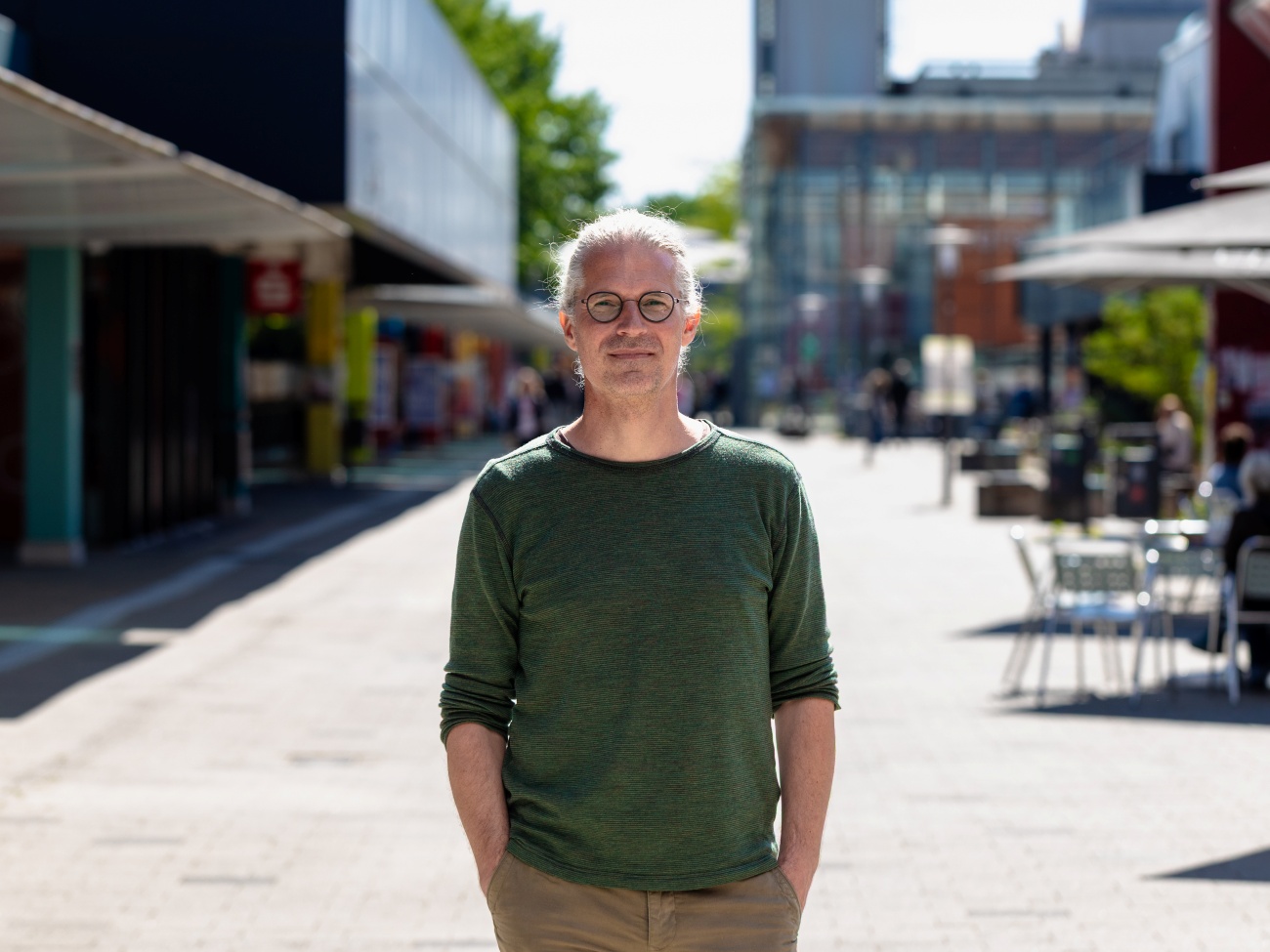
© Matej Meza / Universität Bremen
Would you like to learn more about biodiversity on campus?
On May 22, the “Krautschau” (plant guide) tour will take place again on campus: an active and interactive tour along the University Boulevard with Marko Rohlfs to observe local vegetation. This event is part of the national #krautschau initiative, which aims to increase awareness for flora in cities. The meeting point is at 3 p.m. in front of the BIOM entrance. Please install the app Flora Incognita on your smartphone prior to the event. You are welcome to bring along colored chalk as well. Further information